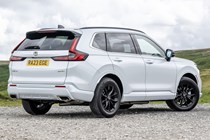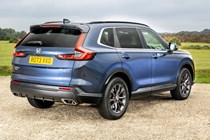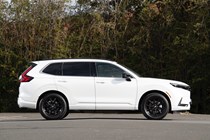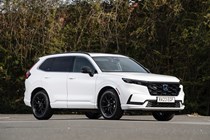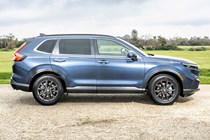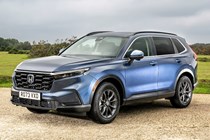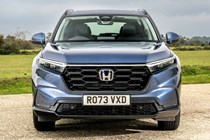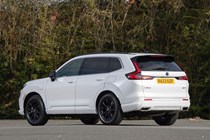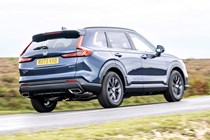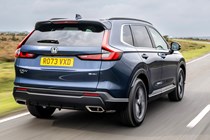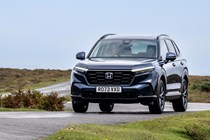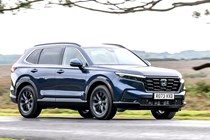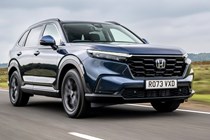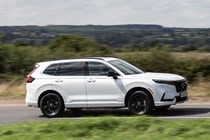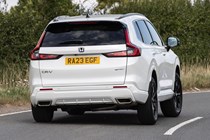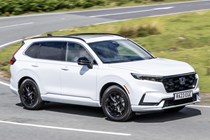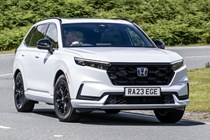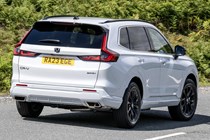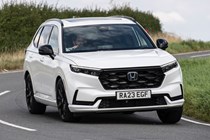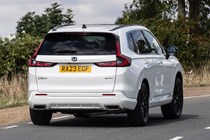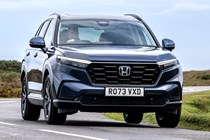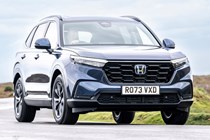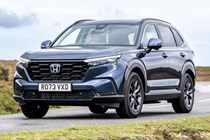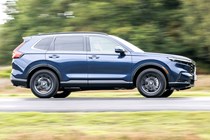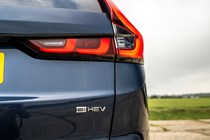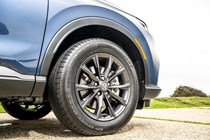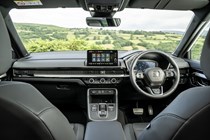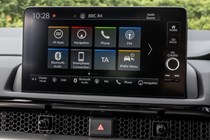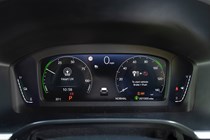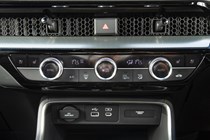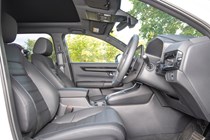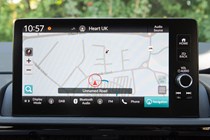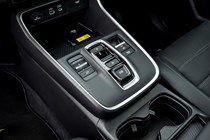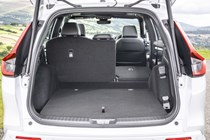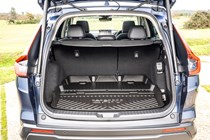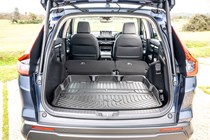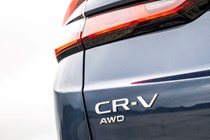
Honda CR-V running costs and reliability
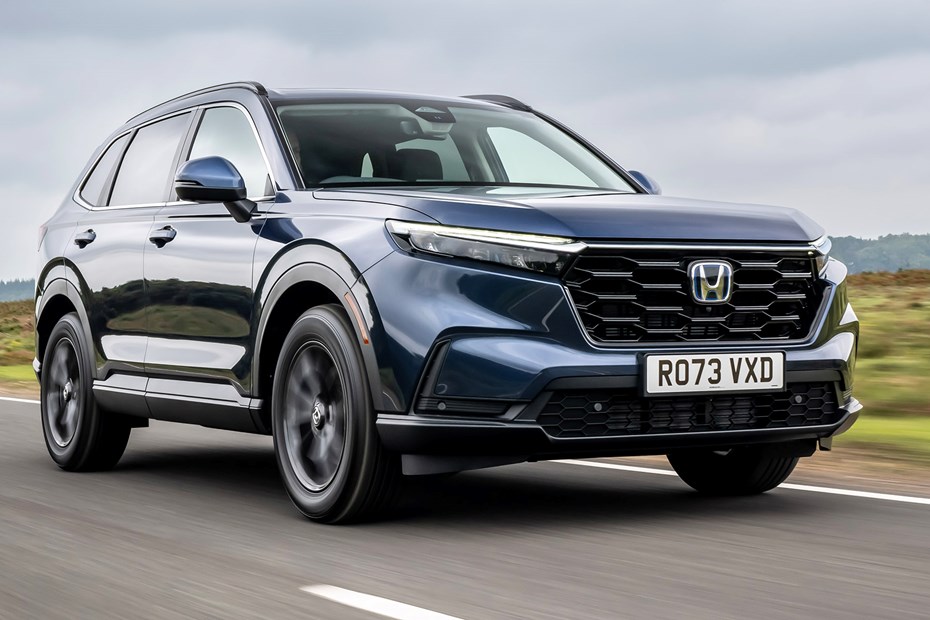
Miles per pound (mpp) ⓘ
| Hybrid petrol engines | 6.3 mpp |
|---|---|
| Plug-in hybrid petrol engines * | N/A |
Fuel economy ⓘ
| Hybrid petrol engines | 42.8 mpg |
|---|---|
| Plug-in hybrid petrol engines * | N/A |
- Just hybrid and plug-in hybrid options
- Good fuel economy for a large family SUV
- PHEV has many potential cost-saving benefits
What are the running costs?
The Honda CR-V has a simple, all-hybrid drivetrain line-up. The plug-in version (e:PHEV) will be the cheapest to run, although the standard hybrid model (e:HEV) also delivers excellent fuel consumption in most driving conditions.
According to WLTP testing procedures the CR-V e:HEV returns more than 50mpg combined, and in testing, we managed 43mpg in typical driving including long motorway jaunts. That’s an excellent figure for a large SUV and would have been a good result for a diesel 10 years ago. It’s a self-charging hybrid which means you can get the best out of it even if you don’t have any way to charge a plug-in car at home.
Combined CO2 emissions of 151g/km is heavy compared with the Civic hatchback it’s closely related to, but this is where the e:PHEV comes into its own, especially if you’re a company car driver.
Plug-in hybrid range and charging
The e:PHEV is costlier to buy – and this is an expensive car ranging alongside the BMW X3 and Land Rover Discovery Sport – but the generous electric-only range of 51 miles and (laughable) claimed 353mpg combined fuel economy (we managed 45mpg in testing on a flat battery) make it an appealing car to run on the firm.
Even so, the PHEV’s battery long range and efficient engine means it emits just 18g/km of CO2 – putting it in the 8% BIK tax bracket for company car users.
Plugging the CR-V into a 7kW home charger will get you from 0-100% charge in around 2.5 hours thanks to a maximum charging rate of 6.8kW. It’s a comparatively large 17.7kWh battery pack, so it’s a shame it doesn’t have the capability of CCS rapid charging, but that will probably suit most drivers just fine.
Servicing and warranty
Honda dealers are usualy small, local businesses with a reputation for good customer service. Not that they particularly need it, as Hondas very rarely go wrong, so you’re unlikely to need to head back to the dealer for any reason but your yearly service.
It’s a shame though that Honda won’t back up this excellent reputation for building sturdy cars with a warranty to match it – like Toyota’s 10-year ‘Relax’ policy. The CR-V’s warranty is a comparatively ungenerous three years or 60,000 miles.
Reliability
- Good reputation for reliability
- No recalls yet, but still a new model
- Solid build quality
Honda has spent years building up an enviable reliability rating, and the CR-V is likely to continue to expand on the Japanese firm’s reputation. So far there have been no recalls, and we’re hearing no tales of woes from our readers.
We have no owners’ reviews of the current model, but all barring the previous generation models score more than four stars overall with reliability being praised, so we’d hope to see similar levels of customer satisfaction with this model.
Ongoing running costs
| Road tax | £590 |
|---|---|
| Insurance group | 34 - 37 |
Get an insurance quote with

|
|




